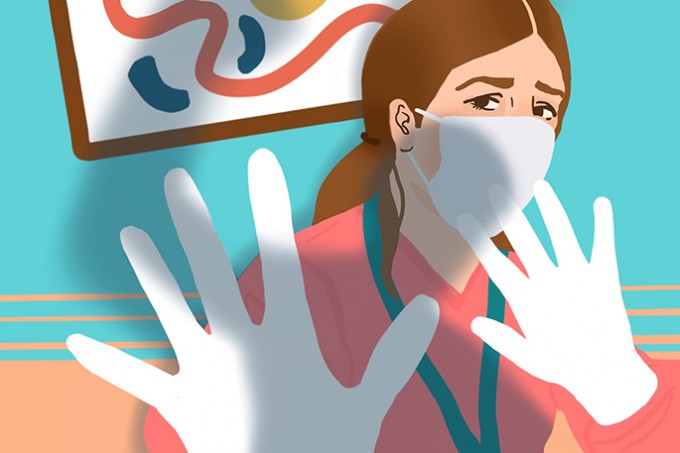Feature
Combatting Workplace Violence
Attacks against nurses are not just part of the job

Even before the outbreak of COVID-19, some nurses felt that walking into work every day posed a threat to their health and safety.
More Dangerous Than Policing
Statistics from the federal Department of Labor reveal that nurses are at greater risk of being assaulted during their shift than are police officers! Nurses trying to provide kind, compassionate care may be hit, punched, kicked or spat on.
COVID-19 has only made matters worse. Vocera Chief Nursing Officer Rhonda Collins, RN, DNP, FAAN, recently described the current healthcare environment as “a pressure cooker of human response.”
Patients are critically ill, and families are unable to be with their loved ones. Nurses are fighting to keep themselves safe from a highly contagious disease, sometimes without the necessary equipment and support to do so. It’s a situation that almost invites overreaction and conflict.
Now more than ever, we need to talk seriously about workplace violence and what we can do to stop it.
Grim Statistics
Nurses know that the impact of workplace violence involving healthcare workers is very real.
According to a 2015 OSHA report:
- 21 percent of registered nurses and nursing students report being physically assaulted.
- 80 percent of assaults are committed by patients.
- Registered nurses are four times more likely to be assaulted than are workers in other industries. Nurses experience an average of 14 violent injuries resulting in days away from work per 10,000 fulltime employees (compared with an average rate of 4.2 injuries per 10,000 fulltime employees for all U.S. private industry).
- Across several healthcare occupations, the most common causes of violent injuries are hitting, kicking, beating and/or shoving.
Those numbers have been rising over the past 15 years. A 2015 study in the CDC journal Morbidity and Mortality Weekly Report found that between 2012 and 2014 alone, the rate of violent injury for nurses and nursing assistants almost doubled.



